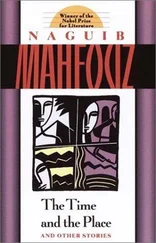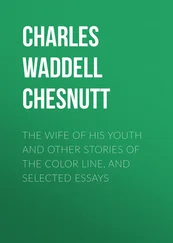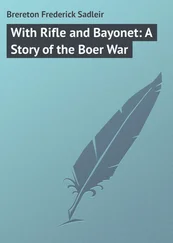Foxx also learned with regret that once he observed a scene, he could not go back and observe it again. So it was. But with all of history at his disposal, he never seemed to run out of material. And so he adopted Rome as his own even as the city, and the rest of the Italian peninsula, grew restless. There were rumors of revolution, that the great patriot Giuseppe Garibaldi might even return from South America to lead the fight to unify Italy’s various kingdoms into a single state.
Meanwhile his money dwindled. In March Foxx had sent a short letter to the Earl in London, politely reminding him of their meeting, and informing him that during the coming tourist season Foxx would be doing sketches daily at the Colosseum, in the Forum, in front of St. Peters, and elsewhere around Rome. Foxx included his address, hoped for the best, and eventually forgot about the letter until late May, when a small package arrived.
It was a copy of Murray’s Hand-Book for Travelers in Italy, 1846 —a small red book, sized to fit in a coat pocket, freshly printed. A white card was inserted near the middle, and when Foxx opened it to that page he found a section of text had been circled in thick, black ink.
…As to souvenirs of Rome, the Earl of Lowestoft reports that a certain expatriate sketch artist, by the name of Foxx, does remarkable drawings with his camera lucida in which tourists are inserted into imagined recreations of past events. We have observed a drawing that this Mr. Foxx has done of the Honourable Oscar Rotham, the Earl’s son, and it is truly remarkable, casting the boy in the likeness of a gladiator engaged in combat within the Colosseum itself! Such fanciful historical sketches would make wonderful souvenirs for the traveler who already has enough of the olive-wood carvings and leaded-glass religious baubles that constitute the usual Roman momentos. Mr. Foxx can be found sketching in the vicinity of the major attractions of Rome, or can be hired for commissions directly at his studio near the Pantheon…
The bookmark was another of the Earl’s calling cards. On the back was a short message:
Good luck, Mr. Foxx!—C. Rotham
He smiled. June was just around the corner. The days were lengthening, and already the first English accents could be heard calling through the streets of Rome.
Foxx hurried out to buy more paper.
* * *
November, 1851
Mayfair, London
Foxx’s Historical Artworks was a small place on Cork Street, just north of the Burlington Arcade and a two-minute walk from the Royal Academy of Art. It had a small shop in front, where light from tall windows fell upon display tables stacked with books and woodcuts, and a private studio in the back. The little bell on the front door chimed as someone stepped in off the sidewalk.
Foxx’s assistant, George, stood to greet the customer while Foxx himself, back in the studio, finished inscribing copies of his latest folio book, Historical Sketches, Vol. 18: The Late Italian Renaissance Reimagined .
When the London publishers saw samples of his work coming up out of Italy in 1846, and learned of his growing popularity among wealthy vacationing nobles, they outbid each other for themed volumes of his sketches, which Foxx sent to London from his studio in Rome. Renaissance Italy Revealed was an instant bestseller, and was followed by other wildly popular works, some now into their fourth or fifth printing: Florence Through the Ages , Rome During the Time of the Apostles , and Leonardo in his Studio . And although no one was willing to admit it openly, Foxx’s Techniques of Michelangelo , though never an official part of the curriculum of the Royal Academy, was secretly read and reread by the faculty and students alike.
By the end of his first summer doing souvenir sketches in Rome, he was as much a tourist attraction as were the Trevi Fountain or the Spanish Steps. But in June of that year Rome had a new Pope, Pius IX, whom Italian patriots believed would support their unification efforts. Tensions heightened all over Italy and by the following summer of 1847 the tourists were far fewer. Foxx read the writing on the wall; before the revolutions broke out in January, 1848, he left Italy and took his camera lucida north of the Alps.
Other bestsellers soon followed: The Construction of Chartres Cathedral , Paris and the Court of Louis XIV , and Famous Battles of the Thirty Years War . Even as the revolutions of 1848 spread out of Italy and engulfed Europe, Foxx traveled and sketched, careful to avoid the areas where the uprisings were most destructive. He eventually returned to London in 1851.
Thus six years passed and Foxx became a minor celebrity. His display in the Fine Art Courts of the Crystal Palace at London’s Great Exhibition that year was constantly filled with visitors. Prince Albert came through and shook his hand, and after that every English family with a claim to noble blood wanted a Foxx historical portrait—showing them triumphant on the fields of Agincourt, or looking grave and solemn at the signing of the Magna Carta. Those who could not afford a private sitting gladly settled for one of his limited-edition “historical recreations”—Wellington at Waterloo, Nelson at Trafalgar. Military victories were perennial favorites. But the gruesome posthumous beheading of Oliver Cromwell’s corpse was, somewhat disturbingly, far and away his best seller.
Money, in short, was no longer an issue. If only Harriet were with him now. She would be so pleased. But Foxx had been discouraged as of late, spending all his time satisfying London’s desire for fanciful historical “reimaginings,” while neglecting his own desire to paint.
He looked around his studio, saw the blank canvases he had purchased and the many tubes of paint sitting unopened on shelves.
Do not complain , he reminded himself. He had been given a great gift: enough wealth to be comfortable along with fame for his masterful, if “fanciful,” artistic skill.
Yet even now, his work with the camera lucida was not coming along as readily as before. It was as if the clarity and intensity of the historical scenes themselves were fading with his lack of interest.
“Mr. Foxx?” It was George, appearing from the front of the shop. “There is a woman here to see you. She claims to have met you many years ago. A Madame Magnin? Funny old bird.”
Foxx started. “Yes, of course. Please, send her back.”
A minute later the old woman shuffled into the studio slowly, flicking a cane ahead of her with each step, tik-tik-tik .
“Ah, Mr. Foxx,” she said, looking around. “This is a nice place, quite fancy.”
“Thank you.” Foxx motioned for her to sit down on the cushioned chair next to his, but she shook her head.
“It has been many years, Madame. How can I help you?”
“I have a message, Mr. Foxx.”
“From whom?”
“Your Harriet.”
Foxx paled.
“She visited me. She said you have been harder to see lately. Distant. She said I was to speak to you. I’ve come across London. It is a long walk from Whitechapel to Mayfair, Mr. Foxx.”
“What…what is the message?”
“You must leave the past behind now. It is time for your future. That thing,” she pointed to the camera lucida , “has served its purpose. Now you must paint.”
She turned and began to shuffle out again.
“Wait!” said Fox, chasing her. “That’s the message? Just…paint?”
“Yes.”
It felt incomplete, anticlimactic. Foxx tried to stall her. “But…Harriet! She is well? She is happy? She is…with the Lord?”
Magnin smiled, still shuffling forward, tik-tik-tik . “Ah! That’s usually the first question, you know.”
Читать дальше












